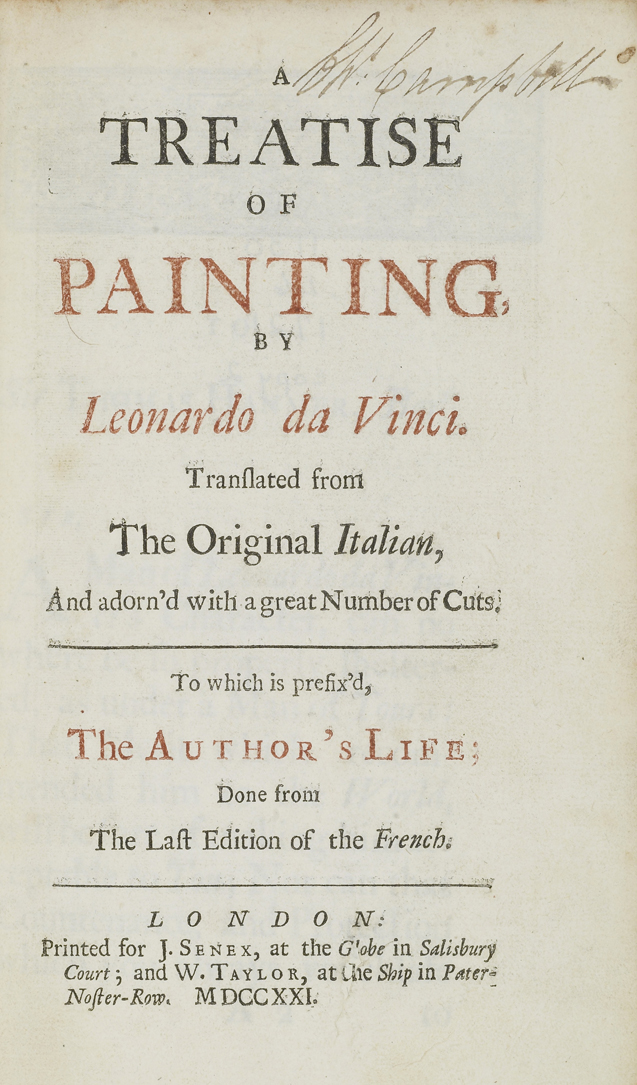
A Treatise on Painting, by Leonardo da Vinci
1721
Senex and Taylor, London
Chapter Display  |
|
If, after imitating any Thing from the Life, you desire to know your Success, and to see how near the Copy approaches the Original; take a Mirrour, and presenting it to the natural Object, survey the Image exhibited therein, and compare it very carefully with your Painting. This Method is very Apposite; for if a Mirrour represent Objects with Relievo, Painting does the same; Painting has but a single Surface, and a Mirrour has no more; the Mirrour and the Painting do equally show the Appearances of things incompassed with Light and Shadow; and both the one and the other show their Objects, as at a great Distance beyond their respective Surfaces. Now, since 'tis own'd, that the Mirrour, by means of Lights and Shadows, makes Objects appear with Relievo; and since 'tis further confess'd, that among our Colours, there are some, whose Lights and Shadows, are stronger than those exhibited in the Mirrour; 'tis evident, that if you do but manage them with the necessary Art and Address, your Painting will like wise appear as a natural Object, represented in a large Mirrour. From the Mirrour you will learn the Brights and Obscures of every Object, and among your Colours you will find some, brighter than the most enlighten'd part of your Model, as on the contrary, others, more obscure than the deepest of its Shadows; so that if your Painting have all the Perfection, whereof it is capable, the Object it represents must appear perfectly the same, as it wou'd, were it exhibited in a Mirrour: This, however, being allow'd, that the latter be only viewed with one Eye, for the Reason already deliver'd in our 48th Page.